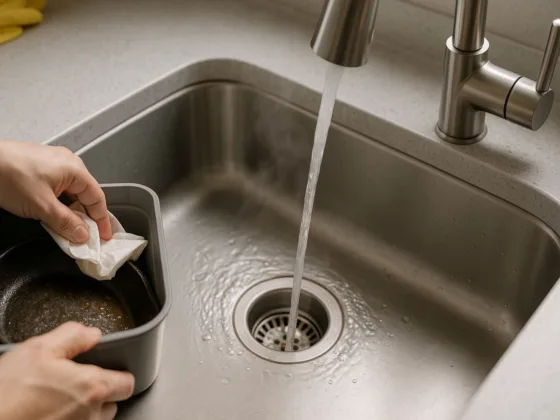Table of Contents Show
Workplace fires are a serious issue. According to the National Fire Protection Association (NFPA), there are more than 70,000 reported fires in commercial settings each year, leading to billions in damages and hundreds of injuries and fatalities. The need for solid fire safety measures is clear. A safe workspace not only protects lives but boosts employee morale and meets legal requirements. This guide dives into practical tips for preventing fire hazards in your workplace.
Electrical Safety: Preventing Electrical Fires
Electrical fires pose a serious threat both in homes and workplaces. Understanding the common causes of these fires can help prevent serious incidents from occurring.
Common Causes of Electrical Fires
- Faulty Wiring: Over time, wires can wear down or become damaged due to age, corrosion, or poor installation. When the wiring is not in good condition, it can create sparks that ignite nearby materials.
- Overloaded Circuits: Most circuits can only handle a specific amount of electrical load. When too many devices are plugged into one outlet or circuit, it can lead to overheating.
- Damaged Equipment: Appliances that are broken or have frayed cords can cause short circuits. These shorts can lead to overheating and fires.
- Improper Use of Extension Cords: While these cords provide temporary power, using them for an extended period can create issues. They are not designed for long-term use and can overheat, especially if they are not rated for the devices they are powering.
Regular checks are essential to ensure that wiring remains safe and functional. It is crucial to distribute devices across multiple circuits to prevent overload.
Inspecting equipment regularly for wear and tear can help identify potential hazards before they become serious problems. It’s important to use extension cords sparingly and to switch to permanent wiring when needed.
Notable Example of Electrical Fire Risk
A notable example of electrical fire risk occurred in 2018 when a fire at a major retailer was traced back to overloaded circuits. This incident resulted in extensive property damage and significant financial loss. Such examples highlight the importance of regular maintenance and proactive measures to prevent electrical hazards.
Measures to Enhance Electrical Safety
To enhance electrical safety, several measures should be implemented in workplaces and homes alike.
Regular Inspections
Regular inspections by certified electricians should be scheduled. These inspections can identify hidden issues before they lead to accidents.
Cord Management
Keeping cords organized helps reduce tripping hazards and minimizes wear and tear. Properly securing cords not only keeps spaces tidy but also lowers the risk of damage that could lead to short circuits.
Responsible Disposal
It is equally important to dispose of damaged equipment responsibly. Old or broken appliances should not be left unattended, as their wiring may pose a fire risk.
Proper disposal involves taking items to recycling centers or following local guidelines to ensure safe disposal.
Training and Awareness
Educate employees on recognizing electrical hazards. Statistics show companies with regular training see a decrease in fire incidents. Knowledge is power when it comes to fire safety.
Flammable Materials and Chemical Safety
Storage and Handling of Flammables
Proper storage of flammable materials is essential for maintaining a safe environment. To achieve this, it is important to follow a set of specific guidelines.
- Labeling: Make sure that all containers holding flammable substances are clearly labeled. This helps everyone easily identify the contents and understand the associated risks.
- Ventilation: Store these materials in designated areas that are well-ventilated. A well-ventilated location minimizes the risk of vapor accumulation, which can lead to dangerous situations.
- Avoidance of Heat Sources: Avoid placing flammable materials in areas where they could be exposed to heat or open flames.
- Regulatory Compliance: Adhere to safety regulations established by organizations such as the Occupational Safety and Health Administration (OSHA) and the National Fire Protection Association (NFPA). These regulations provide guidance on safe storage practices and help prevent accidents.
There have been serious incidents in the past involving flammable chemicals. In one case, improperly stored chemicals ignited, resulting in significant damage to the facility and severe risks to personnel.
To avoid such outcomes, it is important to consistently follow established safety rules and practices when storing and handling flammable materials.
Chemical Compatibility and Reactivity
Understanding which chemicals can interact with each other is crucial for safety. Mixing incompatible substances can lead to dangerous chemical reactions, fires, or explosions.
Before combining any hazardous materials, always check their compatibility. This information can often be found on safety data sheets or by consulting safety resources.
Emergency Response Procedures
Developing clear emergency response plans is essential for managing small fires or chemical spills effectively. Staff should be trained regularly on how to use fire extinguishers and other safety equipment. This training can significantly reduce risk and save lives in an emergency situation.
Ensure that all employees are aware of the correct steps to take when facing a crisis. Practicing emergency drills can reinforce this knowledge and help everyone act quickly and appropriately if an incident occurs. Keeping your workplace safe requires constant vigilance and adherence to established safety protocols.
Housekeeping and Waste Management
Maintaining a Clean Workplace
A clean and organized workplace is crucial for safety. Clutter can not only make it hard to find things but can also increase fire hazards. Statistics indicate that disorganized spaces contribute to a higher number of fire incidents.
Regular cleaning and organizing help keep your environment safe and efficient. This includes getting rid of items that are no longer needed. Creating a schedule for routine cleaning can help everyone stay on track and ensure that the workspace remains tidy.
Proper Disposal of Waste
Safe disposal of waste is vital for workplace safety. Flammable materials should be handled with care and disposed of correctly. It is important to follow local rules regarding hazardous waste. Many areas have specific guidelines for how to deal with materials that could pose a danger.
In addition to proper disposal, it’s crucial to separate non-flammable items into recycling bins. This simple practice aids in maintaining a safer environment and reduces the risk of accidents happening due to improper waste management.
Preventing Clutter and Obstructions
Keeping walkways clear is essential for safety. Clear paths ensure that everyone can move freely throughout the workplace. This is especially important for fire exits, which must always be unobstructed.
In case of an emergency, having clear pathways allows for a swift evacuation. If pathways are blocked, it can lead to serious delays during critical moments.
Establishing a system for regularly checking and clearing these areas can help maintain safety standards for everyone involved. Reinforcing the importance of keeping these areas clear will contribute to a safer workplace overall.
RELATED: 4 Tips to Boost Your Home’s Fire Safety
The Importance of Fire Prevention Equipment and Systems
Fire Prevention Equipment and Systems play a crucial role in safety measures for buildings and facilities.
Fire Extinguishers: A First Line of Defense
The importance of fire extinguishers cannot be overstated. Different types of fires require specific extinguishers to effectively put them out. For instance, a grease fire in a kitchen needs a Class K extinguisher, while electrical fires require a Class C type.
- Tip: It’s vital to regularly check and maintain all fire extinguishing equipment. This means inspecting them for any visible damage, ensuring they are charged, and replacing them if they expire.
- Training: Employees should be well-trained in how to use extinguishers correctly. They must understand the PASS method: Pull, Aim, Squeeze, and Sweep. Regular training sessions can keep everyone sharp on these skills.
Early Detection with Smoke Detectors and Sprinkler Systems
Smoke detectors and sprinkler systems are also essential for early detection of fires. Smoke detectors alert occupants to danger before a fire spreads, allowing for a quick response. Sprinkler systems can control or extinguish fires in their early stages, significantly reducing damage.
- Maintenance: Regular maintenance of these systems is necessary to ensure they work when needed. This includes testing smoke detectors monthly, changing batteries at least once a year, and having professionals inspect sprinkler systems regularly.
- Compliance: It’s also important to familiarize yourself with local building codes regarding fire safety measures. These regulations often require certain types and placements of equipment.
RELATED: The Best Ways to Prevent a House Fire
Clear Signage and Unobstructed Exits
Emergency exits and escape routes must be clearly marked and kept unobstructed at all times. Proper signage helps guide people during an emergency.
- Drills: Regular drills are crucial; they prepare everyone for what to do in a real fire situation. Practicing these evacuation routes helps occupants remember them when under stress.
- Real-World Impact: Real-world examples show that effective drills save lives. Many fire incidents have had better outcomes when people knew what to do because they practiced their escape plans.
Creating a Safer Environment
Overall, having the right fire prevention equipment and systems in place is essential. Regular checks, maintenance, and training contribute to a safer environment for everyone.
Employee Training and Emergency Preparedness
Fire Safety Training Programs
It is essential to provide ongoing fire safety training for all employees. This training should cover the basics of fire prevention and awareness.
Regular drills play a crucial role in preparing everyone for real-life emergency situations. These practices ensure that all staff members know what to do if a fire occurs.
When employees understand fire safety protocols, it creates a safer workplace for everyone. Staying informed about potential hazards and safety measures helps minimize risks. Regular training sessions reinforce these important lessons.
Emergency Action Plans
Creating thorough action plans for emergencies is a vital step in workplace safety. These plans should outline clear evacuation procedures, identify designated assembly points, and establish communication protocols. It is important for everyone in the workplace to understand their role in these plans.
Frequent practice of these emergency procedures helps ensure that employees are ready should a real crisis arise. Familiarity with the action plans boosts confidence and minimizes panic during actual emergencies. Knowing where to go and who to contact can save lives.
Reporting and Response Procedures
Setting up clear procedures for reporting fire hazards is critical. Employees should know how to report any potential risks they observe. Quick reporting can make a significant difference in preventing small issues from escalating into larger fires.
Statistics indicate that early intervention is key in reducing damage and potential injuries. Encouraging a culture of safety and vigilance can empower employees to take action. Every team member plays a role in maintaining a safe environment through prompt reporting and communication.
Conclusion
Implementing these fire safety tips can significantly reduce risks in the workplace. Regular inspections, proper training, and maintaining a clean space are essential. A proactive approach to fire safety creates a safer environment for everyone. Take these steps to protect your team and property today.
FAQs
Common causes of workplace fires include electrical malfunctions, flammable materials, cooking equipment, careless disposal of smoking materials, and inadequate safety measures. It’s important to identify and address these risks in your workplace.
To prevent fires, ensure that all electrical equipment is regularly inspected, store flammable materials safely, provide proper training for employees, maintain clear exits, and install fire alarms and extinguishers in accessible locations.
If a fire breaks out, remain calm and activate the fire alarm. Evacuate the building immediately using the nearest exit, and do not use elevators. Once outside, call emergency services and do not re-enter the building until it is declared safe.
Fire drills should be conducted at least twice a year to ensure that all employees are familiar with evacuation procedures and can respond quickly and safely in case of an actual fire emergency.
Employee training is crucial for fire safety as it equips staff with the knowledge of fire hazards, proper use of fire extinguishers, emergency procedures, and how to respond effectively in case of a fire, ultimately reducing risks and saving lives.
Yes, various regulations govern fire safety in workplaces, including the Occupational Safety and Health Administration (OSHA) standards. It’s important to familiarize yourself with local fire codes and regulations to ensure compliance and safety.










